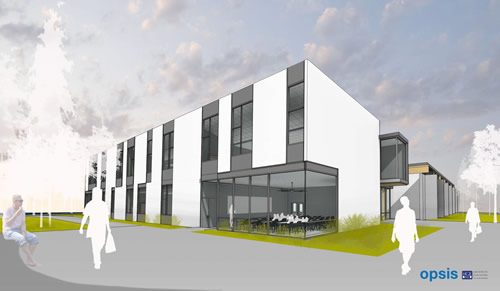Southwestern Oregon Community College to Get New Academic Building
For the first time in nearly 30 years, Southwestern Oregon Community College (SWOCC) in Coos Bay, OR is about to break ground for a new academic building. The Health and Science Technology Building has been in the works for almost 20 years, a goal for the college and Board of Education since the late 1990s.
Ten million for the $17 million project came from the community through fundraisers and donations. For a long time, no one was sure if the project would happen because the last time SWOCC went out for a bond measure was in 2004, and the bond failed. Then the state didn’t offer capital funding for projects again until 2005, which the college used for a project on its Curry County campus. “We put in with the state for this project in 2007, but then the recession happened,” says Patty Scott, SWOCC president.

Finally in 2013, SWOCC secured state funding through a matching grant for $8 million. “So here we are in 2018 with the money to match the grant,” Scott says. “It was no small task.” Some of the funding is coming from state bonds, some from federal grants and private donations, but mostly from the community. “The college has struggled over the years on how to pay for this new building and bond measures tend not to pass here,” notes Elise Hamner, foundation director for the college. “Coos Bay School’s bond passing is unprecedented and is good, but looking at this three years ago we didn’t know if we would pass a bond for $4 million so instead we decided to fundraise and the community support we received has been overwhelming.”
Hamner says that $10 million for the project came from the community-generated funding, aside from a $3 million federal grant. “It’s because the people of this community understand how important it is to do this,” Hamner says. The local Beetham family made a matching pledge of one dollar to every dollar donated up to $1 million. SWOCC plans on securing a contractor for the new building either in February or March of 2018.
Once secured, ground will be broken sometime in March or April. “We anticipate having classes in there by the winter term of 2020,” Scott says. “It is expected to be finished being built in the fall of 2019.”